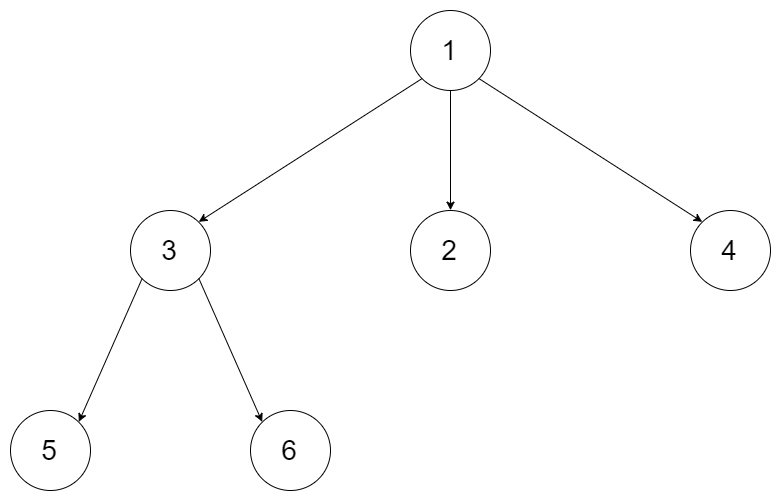Serialization is the process of converting a data structure or object into a sequence of bits so that it can be stored in a file or memory buffer, or transmitted across a network connection link to be reconstructed later in the same or another computer environment.
Design an algorithm to serialize and deserialize an N-ary tree. An N-ary tree is a rooted tree in which each node has no more than N children. There is no restriction on how your serialization/deserialization algorithm should work. You just need to ensure that an N-ary tree can be serialized to a string and this string can be deserialized to the original tree structure.
For example, you may serialize the following
3-ary tree
as
[1 [3[5 6] 2 4]]. You do not necessarily need to follow this format, so please be creative and come up with different approaches yourself.
Note:
Nis in the range of[1, 1000]- Do not use class member/global/static variables to store states. Your serialize and deserialize algorithms should be stateless.
跟serialize bst⼀个思路路。注意每个点后面都要加”,” example: 1,#,3,2,4,#,5,6,#,#,#,#,#,
/*
// Definition for a Node.
class Node {
public int val;
public List<Node> children;
public Node() {}
public Node(int _val,List<Node> _children) {
val = _val;
children = _children;
}
};
*/
class Codec {
// Encodes a tree to a single string.
public String serialize(Node root) {
if (root == null) return "";
Queue<Node> que = new LinkedList<>();
StringBuilder sb = new StringBuilder();
sb.append(Integer.toString(root.val)).append(",#,");
que.add(root);
while (!que.isEmpty()) {
Node node = que.poll();
for (Node n : node.children) {
sb.append(Integer.toString(n.val)).append(",");
que.add(n);
}
sb.append("#,");
}
return sb.toString();
}
// Decodes your encoded data to tree.
public Node deserialize(String data) {
if (data.length() == 0) return null;
String[] s = data.split(",");
Queue<Node> que = new LinkedList<>();
Node root = new Node(Integer.parseInt(s[0]), new ArrayList<Node>());
que.add(root);
int i = 1;
while (!que.isEmpty()) {
Node node = que.poll();
i++;
while (!s[i].equals("#")) {
Node c = new Node(Integer.parseInt(s[i]), new ArrayList<>());
node.children.add(c);
que.add(c);
i++;
}
}
return root;
}
}
// Your Codec object will be instantiated and called as such:
// Codec codec = new Codec();
// codec.deserialize(codec.serialize(root));
No comments:
Post a Comment